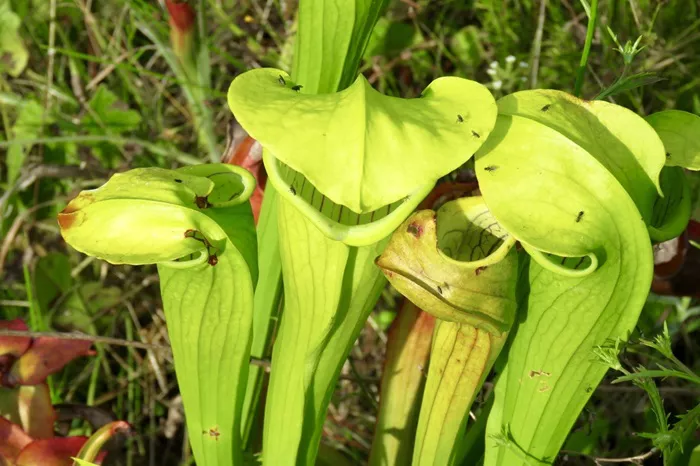Texas is known for its many unique features: the nation’s top grocery store (H-E-B), the fastest highways, and even carnivorous plants that devour their prey.
While these plants don’t target humans—at least not yet—they are deadly to insects and, occasionally, small animals.
Carnivorous plants are a specialized group capable of trapping and digesting insects and other small creatures. According to Britannica, they use “ingenious pitfalls and traps” to capture their prey.
Across the United States, there are 66 species of carnivorous plants, as noted by The Nature Conservancy. Four of these species—pitcher plants, sundews, bladderworts, and butterworts—thrive in East Texas, particularly within the Big Thicket National Preserve in Kountze, located at 6102 FM 420.
These plants are not only efficient hunters but also survivors. The National Park Service (NPS) explains that they thrive in poor soils by absorbing nutrients from the insects they digest.
The Pale Pitcher Plant: Nature’s Clever Trap
The pitcher plant is a master of passive hunting. It doesn’t chase its prey; instead, it waits for unsuspecting insects to come to it.
Attracted by the plant’s vibrant colors, nectar, and scent, insects approach the lip of the pitcher. Once inside, they slide down the waxy surface, falling deeper into the plant’s funnel. Any attempt to escape is thwarted by downward-pointing hairs, making it nearly impossible for the insect to climb out.
The insect eventually drowns in a pool of digestive fluid at the bottom of the pitcher. Enzymes in the fluid break down its body, leaving behind only the exoskeleton.
Sundews: Sticky But Deadly
Sundews, small perennial herbs, are another type of carnivorous plant found in Texas. Their leaves are lined with stalks that secrete a sticky, dew-like substance from glands at the tip of each stalk.
Insects, drawn by the glistening droplets, land on the sundew, only to become trapped in the sticky mucilage. As the insect struggles, the plant wraps its stalks around the prey.
Within minutes, the sundew secretes digestive enzymes and acids that break down the insect’s body, turning it into a nutritious meal.
Bladderworts: Underwater Predators
Bladderworts are aquatic plants with flowers that rise above the water’s surface. Below, their leaves contain small oval bladders that trap and digest tiny aquatic organisms.
Hairlike structures at the bladder’s opening sense nearby movement. When triggered, the bladder inflates, pulling in both water and the unsuspecting organism.
Butterworts: Luring with Sticky Leaves
Butterworts use their sticky leaves to trap insects. Their leaves contain two types of glands: peduncular glands and sessile glands.
Peduncular glands secrete sticky droplets on the leaf’s surface, which trap insects upon contact. As the insect struggles, more glands release mucilage, further ensnaring the prey.
Once digestion begins, sessile glands come into play, releasing enzymes that break down the insect’s body. The plant absorbs the nutrients through its leaf surface.
Visit Big Thicket National Preserve
To see these fascinating plants in action, visitors can explore Big Thicket National Preserve or join nature talks hosted in the spring and summer. For more information on these events, visit the Big Thicket National Preserve website.


